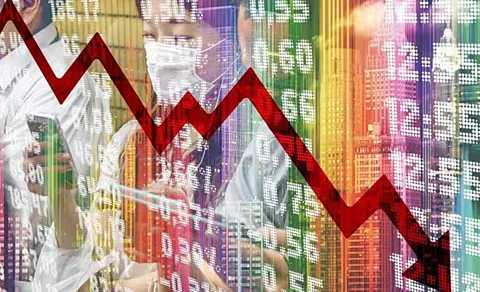

The Indian stock market witnessed sharp losses across segments on June 12, as heightened geopolitical tensions and global economic uncertainty spooked investors. The Sensex plummeted nearly 1,000 points during intraday trade, while the Nifty slipped below the 24,850 mark.
The Sensex opened at 82,571.67 against its previous close of 82,515.14, and went on to fall 992 points, or 1.2 percent, to touch an intraday low of 81,523.16. The Nifty 50 opened at 25,164.45 and plunged 1.3 percent to hit a low of 24,825.90 during the session.
By the close, the Sensex had shed 823 points, or 1 percent, to end at 81,691.98, while the Nifty 50 settled 253 points, or 1.01 percent, lower at 24,888.20. Broader markets also came under pressure, with the BSE Midcap and Smallcap indices losing 1.52 percent and 1.38 percent, respectively.
The total market capitalisation of companies listed on the BSE fell to nearly ₹449.6 lakh crore, down from about ₹455.6 lakh crore in the previous session—wiping out over ₹6 lakh crore in investor wealth in a single day.
Markets across the globe were weighed down by fresh concerns in the Middle East. Asian and European indices also ended lower on fears of escalating tensions between the US and Iran.
According to reports, the US is withdrawing non-essential personnel from the region amid fears of a military confrontation, as nuclear negotiations continue to break down.
Speculation is rife that Israeli forces may launch a strike on Iran’s nuclear facilities. Meanwhile, US President Donald Trump has reiterated that his administration would not permit Iran to acquire nuclear weapons.
Investor sentiment remained subdued despite an apparent breakthrough in US-China trade negotiations. While President Trump claimed a deal was “done”, Chinese confirmation is still pending.
Trump announced that China would supply the US with rare earths and magnets, and the US would allow Chinese students to attend American universities. However, he also mentioned that the US would impose tariffs of 55 percent, while China would face 10 percent tariffs—a claim that has raised eyebrows.
“There are reports of a possible agreement, but China hasn’t officially confirmed anything. Given Trump’s credibility issues, markets are unlikely to price in any deal just yet,” said VK Vijayakumar of Geojit Financial Services.
Global growth concerns continue to dampen sentiment. The World Bank on Tuesday revised down its global growth projections, warning that US tariff policies would slow both domestic and international growth.
The global economy is now expected to grow at 2.3 percent in 2025, 2.4 percent in 2026, and 2.6 percent in 2027—all lower than earlier forecasts.
“The tariff crisis isn’t over yet. President Trump has said he will send letters to trading partners setting new tariff rates in the coming fortnight. Until there’s more clarity, markets are likely to remain volatile,” Vijayakumar added.
Despite softer-than-expected US inflation data for May, the Federal Reserve is expected to keep interest rates unchanged at its upcoming June policy meeting. The continued uncertainty over tariff policies has pushed back expectations of rate cuts, weighing on risk assets.
“The sharp sell-off was triggered by a combination of global and domestic factors, including delayed Fed rate cut expectations and sticky US inflation,” said Pranay Aggarwal of Stoxkart.
Analysts also flagged stretched valuations in the domestic market as a trigger for profit booking. The Nifty 50’s price-to-earnings ratio currently stands at 22.60, above its one-year average of 22.19 and close to its six-month high of 22.80.
“In the absence of fresh domestic triggers, the Indian market looks overbought. This has prompted both retail and institutional investors to trim their positions,” said a Mumbai-based fund manager.
(By arrangement with livemint.com)